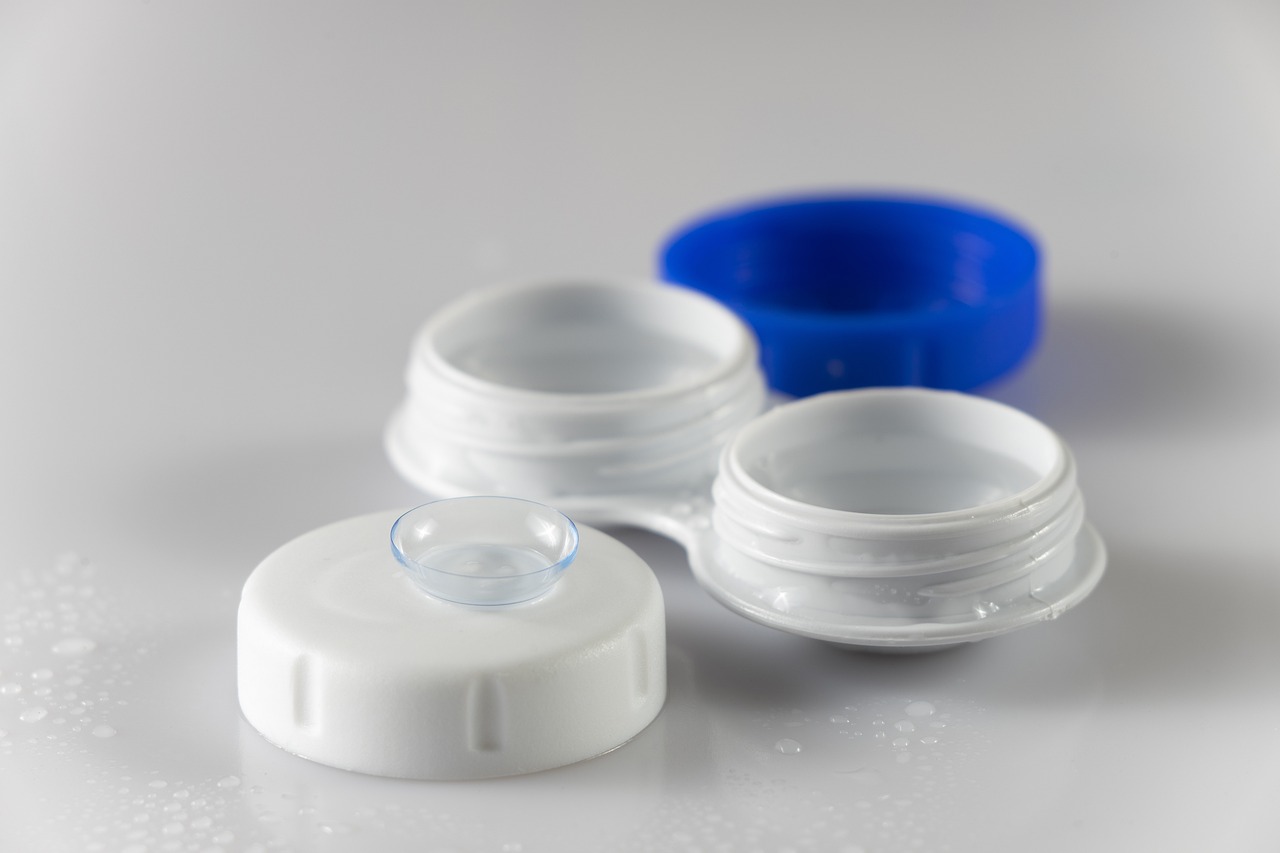What Is a Multifocal Contact Lens? Everything You Need To Know

Multifocal contact lenses incorporate different lens powers to improve vision at various distances. But how exactly do they work, and are they suitable for your eyesight? Let's explore how multifocal contacts function and determine if they might be the right choice for you.
Table of Contents
- What are Multifocal Contact Lenses?
- Types of multifocal contact lenses
- How do multifocal contacts work
- Multifocal contact lenses pros and cons
- Who Should Consider Multifocal Contact Lenses?
- General Factors to Consider for Multifocal lenses
- Tips for Adjusting to Your New Multifocal Lenses
- Multifocal Contact Lenses vs. Monovision
- Multifocal Contact Lens Vs Bifocals
- How to read multifocal contact lens prescription
- Popular Multifocal Contact Lens Brands
- Wrap Up
What are Multifocal Contact Lenses?
Multifocal contact lenses contain multiple prescriptions within a single lens. They include a prescription for close objects, another for normal distance viewing, and additional prescriptions for intermediate distances.
Multifocal contact lenses differ from traditional lenses by addressing multiple vision issues, not just a single refractive error like nearsightedness or farsightedness. Many people experience more than one refractive error, and as you age, you can also develop presbyopia, an age-related condition affecting the ability to focus on close objects, usually starting around age 45.
Types of multifocal contact lenses
There are many different types of multifocal contact lenses. Each one offers different benefits and drawbacks. Let’s give you a rundown on each type.
- Concentric Multifocal Contacts: These lenses have a central zone for distance vision, surrounded by concentric rings that alternate between near and distance prescriptions.
- Aspheric Multifocal Contacts: Similar to progressive eyeglass lenses, these lenses feature a gradual transition in power from distance to near vision, without visible lines.
- Segmented Bifocal Contacts: These rigid gas permeable lenses have distinct segments for distance and near vision, separated by a visible line, similar to bifocal eyeglasses.
How do multifocal contacts work
Multifocal contact lenses are designed to address vision issues at multiple distances, making them highly effective for those with presbyopia and other refractive errors.
Their functionality lies in the innovative design, which incorporates multiple focus zones within a single lens. Each zone has a different refractive power, tailored to correct vision for near, intermediate, and far distances.
This allows wearers to switch focus seamlessly without the need for additional eyewear.
By integrating these varied focal points, multifocal lenses enable clear vision across all distances, enhancing overall visual acuity and convenience for the user.
Multifocal contact lenses pros and cons
Determining If Multifocal Contacts Are Right for You!
Advantages of Multifocal Contacts
Multifocal contact lenses offer several benefits:
- Improved visual acuity across various distances, from near to far.
- A smoother transition between different prescriptions.
- The convenience of seeing well in most situations without needing extra eyewear.
Cons of Multifocal Contacts
However, there are some potential downsides:
- They may be harder to adjust to due to a different viewing experience.
- Users might experience nighttime glare and hazy or shadowy vision during the adjustment period.
- Multifocal contact lenses can be more expensive due to their complex design.
Also read to know What Should to do If Eyes turn Red Wearing Contact lenses?
Who Should Consider Multifocal Contact Lenses?
Aging Individuals
As you age, it’s common for your vision to change, especially when it comes to focusing on close objects. For this reason, eye specialists often recommend multifocal lenses for people aged 40 and older.
People with Presbyopia
If you have trouble focusing on objects at different distances, multifocal contact lenses might be beneficial. This includes those with presbyopia, age-related farsightedness, or other vision issues that affect focus.
Diabetes Patients
Eye doctors may suggest multifocal contact lenses for individuals with specific eye conditions, such as diabetes. These lenses can help diabetes patients, who often suffer from dry eye syndrome due to insufficient tear production. Water-based contacts and lubricating eye drops can provide relief.
Individuals with Special Visual Needs
If your job requires frequent shifting between looking at screens or clipboards and distant objects, multifocal contact lenses can be very helpful. They enable you to see both near and far without constantly switching glasses.
General Factors to Consider for Multifocal lenses
Before purchasing multifocal contact lenses, you'll need to visit your eye doctor to determine the best type for you. The doctor will consider your pupil size and your near prescription ("add") when choosing lenses.
Aspheric multifocals typically suit mild to moderate presbyopia, while concentric or segmented lenses are better for advanced presbyopia. Some other factors include:
Cost: Prices vary by lens type and brand. Your optometrist will help you choose options that fit your needs and budget.
Comfort: Ensure the lenses are comfortable. Inform your doctor if you experience any discomfort.
Lifestyle: Consider how often you'll wear the lenses and your usual activities to select suitable lenses.
Adjustment Time: Allow time to adjust to new multifocal lenses. If you haven't adapted after 10 to 12 days, consult your eye specialist.
Also read How to Clean your Contact Lenses
Tips for Adjusting to Your New Multifocal Lenses
When you receive multifocal contact lenses, it's crucial to follow your optometrist's instructions carefully.
They will guide you on how to wear and care for your lenses. Regular cleaning and disinfection using the recommended solution are essential to maintain lens hygiene. Replace your contact lens case every three months to prevent contamination.
To adapt to multifocal lenses effectively, wear them frequently as advised by your eye doctor. This helps your eyes adjust to the different powers within the lenses more quickly. Most patients typically take about a week to feel comfortable with their new multifocal lenses.
Avoid looking down unnecessarily, especially when walking or performing tasks. This habit can disrupt your depth perception and hinder your adjustment to multifocal lenses.
Maintaining proper eye alignment and focusing straight ahead can enhance your comfort and visual clarity while wearing multifocal contacts.
Multifocal Contact Lenses vs. Monovision
Monovision contacts use one lens for distance vision and the other for near vision, making them easier to adjust to and more cost-effective.
However, they can cause issues with depth perception and require brain adaptation.
Multifocal contacts have multiple prescriptions within a single lens for various distances, offering smooth transitions between focal lengths and suitability for multiple refractive errors. They have a longer adjustment period and are more expensive.
Choosing the right option depends on your lifestyle, needs, comfort, and budget. Discuss with your eye doctor to determine the best fit for your vision requirements. Both options have unique advantages and drawbacks, so personalized advice is essential.
Multifocal Contact Lens Vs Bifocals
Bifocal contact lenses are a specific type of multifocal lenses that may be more suitable for certain individuals compared to other multifocal options.
They are particularly effective for those who have recently developed presbyopia but have been accustomed to wearing contact lenses for correcting one refractive error, such as myopia or astigmatism, throughout their lives.
Bifocal contacts provide two different powers within the same lens, allowing for improved visual clarity at both near and far distances.
On the other hand, multifocal lenses like progressive or concentric designs are better suited for individuals facing multiple refractive errors, such as myopia, astigmatism, and presbyopia concurrently.
These lenses offer a range of focal points within the lens, making it easier to adjust vision across different distances without the need for switching between different types of lenses.
This versatility makes progressive and concentric multifocal contacts a preferred choice for older adults dealing with multiple refractive challenges.
How to read multifocal contact lens prescription
Reading a multifocal contact lens prescription involves understanding several key components. Here’s a breakdown of what each part typically means:
- OD and OS:
- OD (Oculus Dexter) refers to the right eye.
- OS(Oculus Sinister) refers to the left eye.
- Sometimes, OU (Oculus Uterque) is used for both eyes.
- Power (PWR/SPH):
- This indicates the strength of correction needed for nearsightedness (-) or farsightedness (+). Each eye will have its own value.
- Add:
- This stands for the additional magnifying power needed for reading or seeing up close. It’s added to the distance prescription.
- Commonly, it’s specified as Low, Medium, or High.
- BC (Base Curve):
- This refers to the curvature of the contact lens and is usually a number between 8.0 and 10.0. It helps the lens fit properly on your eye.
- DIA (Diameter):
- This is the diameter of the lens, typically between 13.0 and 15.0 mm. It ensures the lens covers the right portion of your eye.
- Brand/Type:
- The specific brand or type of multifocal contact lens prescribed by your eye doctor.
- Dominant (D) and Non-Dominant (N):
- In some prescriptions, especially for monovision or certain multifocal designs, the dominant eye (D) will have the primary distance correction, and the non-dominant eye (N) will have the near correction.
Here’s an example of a multifocal contact lens prescription:
- OD:
- PWR: -2.00
- ADD: +2.00
- BC: 8.6
- DIA: 14.2
- OS:
- PWR: -1.50
- ADD: +2.00
- BC: 8.6
- DIA: 14.2
- Brand: Acuvue Oasys for Presbyopia
In this example:
- The right eye (OD) has a distance power of -2.00 and an additional reading power of +2.00.
- The left eye (OS) has a distance power of -1.50 and an additional reading power of +2.00.
- Both lenses have a base curve of 8.6 and a diameter of 14.2.
- The brand prescribed is Acuvue Oasys for Presbyopia.
Popular Multifocal Contact Lens Brands
Several reputable companies produce multifocal contact lenses, offering a variety of options to cater to different vision needs.
Some well-known manufacturers in this field include Acuvue, Clariti, Bausch & Lomb, Biofinity, and Proclear.
Each company offers multifocal lenses in various types and package sizes, ensuring there are options available to suit diverse preferences and prescriptions.
These lenses are designed to provide clear vision at multiple distances, accommodating individuals with conditions like presbyopia and other refractive errors effectively.
Wrap Up
In conclusion, multifocal contact lenses offer a versatile solution for individuals experiencing presbyopia and other vision impairments.
While they may require an adjustment period and involve a higher cost, the benefits of improved visual acuity and convenience often outweigh these drawbacks.
Consulting with an eye care professional is crucial to determine the most suitable type of multifocal lenses based on individual needs, lifestyle, and comfort.
With proper care and adherence to your eye doctor's instructions, multifocal contact lenses can significantly enhance your quality of life by providing a seamless and effective way to manage your vision.



